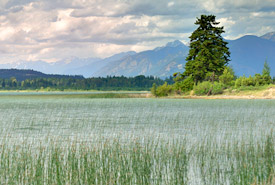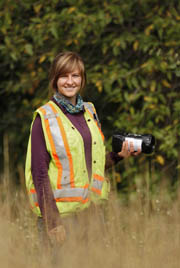Ecosystem restoration: A practice of patience

Wetlands on Columbia Lake - Lot 48 (Photo by NCC)
I am an immediate gratification kind of person. If there is something I can do now to see results now, I will go the extra mile just to feel that satisfaction. Sometimes this means sleep deprivation or failed attempts to learn something new; like how to play guitar.
One thing that working in conservation has taught me is that sometimes that feeling of satisfaction doesn’t come to you immediately. In fact, sometimes that immediate feeling after a project is just the opposite.
Take ecosystem restoration, for example. The Columbia Valley is in a desperate need of extensive ecosystem restoration. Years of tree encroachment on grasslands has led to large areas of dense young forests. Historically low-intensity frequent wildfires kept tree encroachment in check. But as people settled in the valley, it was no longer desirable to let fires burn naturally.
Thankfully projects are cropping up throughout the valley to help thin stands to a more natural level. A number of Nature Conservancy of Canada properties have recently undergone ecosystem restoration treatments.
Two very different methods were employed on two different properties: hand thinning and mastication. Hand thinning involves crews of workers manually cutting and piling trees for removal by burning.
Mastication is exactly what you envision: a large machine basically eats the trees chipping then into small pieces that are distributed on the landscape for eventual decomposition. Mastication is an efficient and effective method that produces relatively less particulate emissions than hand thinning and burning. It also reduced the risk of invasive species colonizing burned patches in the traditional cut and pile method and keeps nutrients on site. The downside is that it is messy.
This is where my immediate gratification issue comes into play. Nature doesn’t care if you like to see immediate results. Its timescale is far beyond our limited patience. Decomposition takes years and even decades. Although I would like to see beautiful grassland immediately crop up, it is just not realistic. The reality is that the pay back for a lot of hard work and money investment will likely occur in many years to come.

Columbia Valley - Lot 48, before and after restoration (Photo by NCC)
Ecosystem restoration is a practice of patience; the trees may be gone but the ecosystem has a lot of work to do.


